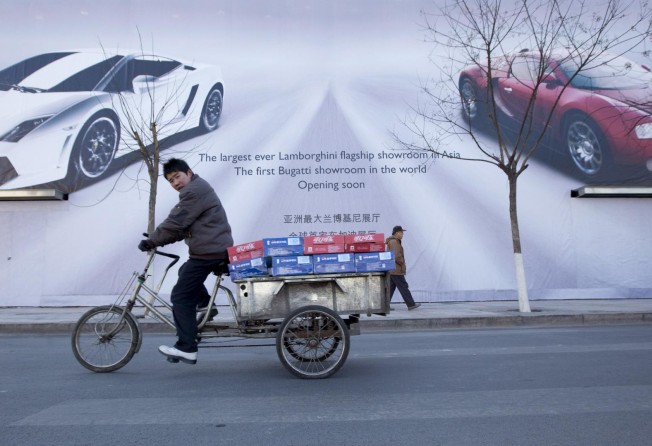Hidden household income in China tops 6.2tr yuan: study
Startling result points to rampant corruption among the elite, study says

China’s hidden household income totaled 6.2 trillion yuan in 2011– accounting for 12 per cent of the country’s GDP – underlining the widespread impression corruption represents a “serious challenge” to society, a state-backed foundation’s study says.
Most of this undeclared personal or household income comes from undocumented sources and is held by a few individuals, the study says.
The findings were released by the National Economic Research Institute in Beijing and reported by Caixin magazine on Monday.
The institution is backed by the China Reform Foundation, an institution affiliated with the country’s principal economic planner, the National Development and Reform Commission. The analysis is based on a survey of more than 5,300 households in 18 provinces and 66 cities, Caixin says.
The study results estimated the 2012 per capita income of the richest 10 per cent of the urban population at 188,000 yuan – 3.2 times more than the official figure. The urban rich make almost 21 times more than the poorest members of society. Official figures placed the gap at 8.6 times.
The study concluded hidden income contributed to the huge gap between official figures and those generated by the survey.
“Corruption’s impact on society is expanding, posing a serious challenge to society,” Caixin quoted from the report.
Hidden income, also known as ‘grey income’, includes earnings ranging from utterly illegal activities such as bribes and off-book transactions, to gifts innocently given by parents to teachers.
Wang Xiaolu, the senior researcher who led study, has said in past interviews that official studies were based on figures volunteered by residents prone to concealing their hidden income. The China Reform Foundation study compares patterns of alleged consumption with legitimate income. Researchers derived levels of hidden income by using a sophisticated algorithm that calculated the gap between income and consumption.
Wang was among the first scholars in the mainland to conduct systematic research into the distribution of grey income. His study is significant because it reveals income inequality is far more extreme than previously estimated.
The study concludes the urban population had a Gini index of 0.5 in 2011, a higher figure than that released by the official National Bureau of Statistics in January. A Gini coefficient is a measure of income inequality, where a figure of 0 represents perfect equality while 1 indicates perfect inequality. A reading above 0.4 is recognised as a warning sign.
The study cited loose monetary policy, exacerbated by lax regulations, as the cause of the swelling volume of hidden income. It pointed to the mismanagement of public funds, a lack of procedures regulating the economy, uneven income distribution triggered by monopoly holdings, government-determined monopolies in public administration, a lack of effective oversight on public power, and rife corruption in the public service sector as being the institutional problems responsible.
Wang’s first investigation into the subject in 2007 found a stunning 55 times difference in income between China’s poorest and wealthiest groups in 2005, significantly greater than the official figure of 21 times.